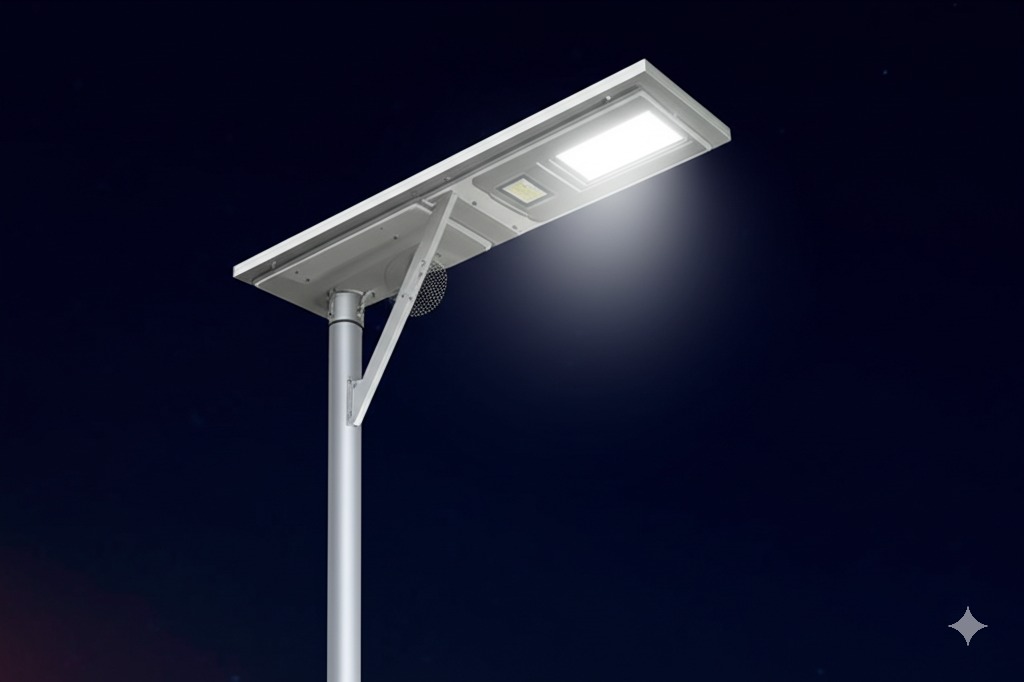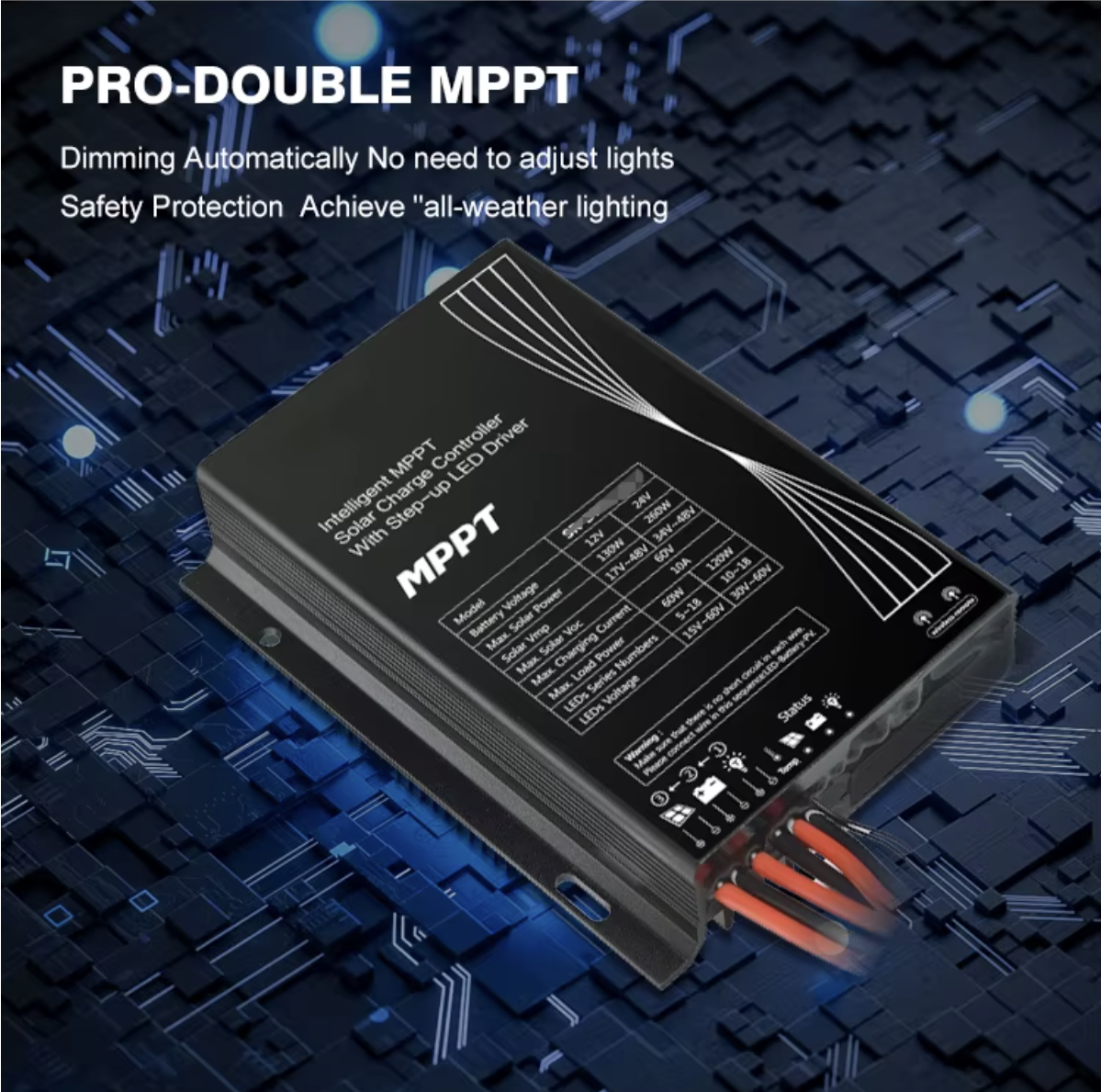Ever wondered how streetlights can operate without any electrical wiring? All-in-one solar street lights provide lighting completely independent from the grid, using only solar energy. These compact units are revolutionizing outdoor lighting solutions.
An all-in-one solar street light works by converting sunlight into electricity during the day, storing it in an internal battery, then using that stored energy to power LED lights at night. This self-contained system includes solar panel, battery, controller and light fixture in one compact housing.

This innovative design eliminates the need for trenching and wiring while providing reliable, cost-effective lighting. Let's examine how each component contributes to making these lights so efficient and practical.
What Are the Main Components Inside?
Understanding what's inside helps explain how the system functions so effectively. Every part has been carefully engineered to work together seamlessly.
The key components are: a high-efficiency solar panel, lithium-ion battery, LED light module, and intelligent controller - all housed in a weather-resistant casing. Each element plays a crucial role in the light's operation and performance.

Detailed Component Functions
| Component | Function | Importance |
|---|---|---|
| Solar Panel | Converts sunlight to DC electricity | Determines charging efficiency |
| Lithium Battery | Stores electrical energy | Affects runtime and lifespan |
| LED Module | Provides illumination | Impacts brightness and quality |
| Smart Controller | Manages entire system | Regulates charging/discharging |
| Housing | Protects components | Ensures durability in all weather |
After 14 years in solar lighting manufacturing, we've found the controller is often the most overlooked yet critical component. It's what makes the system "smart" by automatically adapting to weather conditions and usage patterns.
How Does the Daily Operation Cycle Work?
The beauty of these systems lies in their automated daily cycle - charging by day, lighting by night. Understanding this cycle helps appreciate their reliability.
Each morning, sunlight activates the solar panel which charges the battery until full. At dusk, the controller automatically switches to battery power to operate the LEDs until dawn. This cycle repeats continuously with no manual intervention needed.

Step-by-Step Daily Operation:
-
Morning Charge Begins
- Solar panel starts generating electricity at first light
- Controller regulates charging to protect battery
- Charging continues throughout daylight hours
-
Late Afternoon Optimization
- Controller adjusts charging parameters as light fades
- Battery reaches full charge (if sufficient sunlight)
-
Evening Activation
- Light sensor triggers LED operation at dusk
- Initial brightness set based on battery status
- Motion sensors activate if equipped
-
Nighttime Operation
- LEDs operate continuously or with dimming
- Motion detection boosts brightness when needed
- Controller monitors battery depletion
-
Early Morning Shutdown
- Deactivates near dawn as battery nears discharge
- Light shuts off completely when daylight returns
- System resets for new charging cycle
Throughout this cycle, the smart controller makes constant adjustments to maximize efficiency and runtime. Even on cloudy days, modern systems can often operate for multiple nights through intelligent energy management.
What Makes the Smart Controller So Important?
The controller is the "brain" that coordinates everything. Its sophistication directly impacts performance, especially in challenging conditions.
The smart controller performs six critical functions: charge regulation, battery protection, light activation, brightness adjustment, system monitoring, and fault detection. Advanced controllers adapt to seasonal changes and weather patterns.

Controller Capabilities Explained:
-
Charge Management
- Uses MPPT (Maximum Power Point Tracking) technology
- Extracts maximum energy from solar panel
- Adjusts for varying sunlight conditions
-
Battery Protection
- Prevents overcharging during peak sunlight
- Guards against deep discharge at night
- Extends battery lifespan significantly
-
Light Control
- Automatic dusk-to-dawn operation
- Adjustable brightness settings
- Motion sensor integration
-
Energy Optimization
- Calculates optimal energy usage
- Adjusts performance based on stored energy
- Extends runtime during poor weather
-
System Monitoring
- Tracks charge/discharge cycles
- Records performance data
- Can connect to monitoring systems
After manufacturing thousands of these systems, we've learned that investing in a quality controller makes the difference between a light that lasts 2-3 years versus 5-7 years. The controller's intelligence becomes particularly valuable during winter months or prolonged cloudy periods.
Conclusion
All-in-one solar street lights operate through a perfectly coordinated system that harvests sunlight, stores energy intelligently, and delivers reliable lighting - completely independently from the power grid. Their self-sufficient design makes them ideal for a wide range of outdoor lighting applications.

